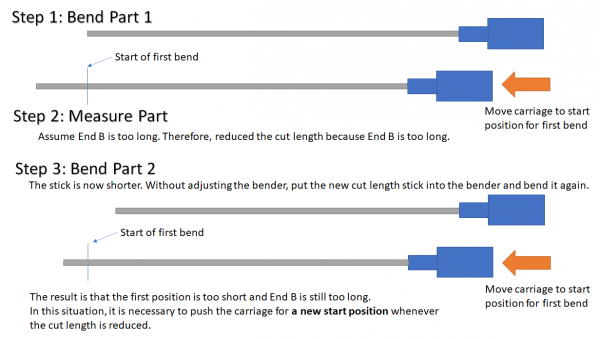Difference between revisions of "The Effect of Changing Cut Length with No Adjustment to the Draw Bender"
From ATTWiki
(→VIDEO of RECALL and SEND) |
(→The Effect) |
||
| Line 23: | Line 23: | ||
<tr valign=top> | <tr valign=top> | ||
<td width=300> | <td width=300> | ||
| − | In a situation where the part shape qualifies and the length on end A qualifies, but the length at end B is LONG, then it is usually still necessary to | + | In a situation where the part shape qualifies and the length on end A qualifies, but the length at end B is LONG, then it is usually still necessary to send a correction to the bender after the user changes the Cut Length on the stick.<br><br> |
| − | + | The reason is because reducing the cut length will pull the part back into the bender by the amount of the change.<br><br> | |
| + | So, if cut length is changed to adjust and correct any part of the tube shape that is not end A, then the starting carriage location must also change. In this case, it must move forward.<td> | ||
</td> | </td> | ||
<td> | <td> | ||
Revision as of 14:39, 2 May 2022
|
|
Contents |
The Effect
|
In a situation where the part shape qualifies and the length on end A qualifies, but the length at end B is LONG, then it is usually still necessary to send a correction to the bender after the user changes the Cut Length on the stick. |

